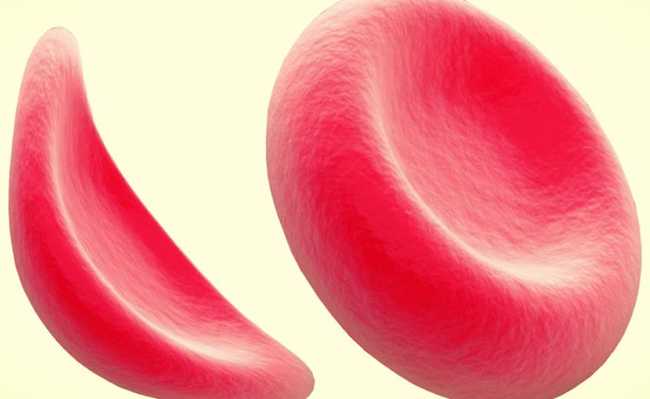What is sickle cell anemia, symptoms and treatment
Sickle cell anemia is an inherited disease, but it is treatable. Understand

Sickle cell anemia is an important genetic anomaly, being the most prevalent hereditary disease in Brazil. The mutation originated on the African continent and can be found in populations from different parts of the planet, with high incidences in Africa, Saudi Arabia and India.
Also called sickle cell anemia or sickle cell anemia, sickle cell anemia occurs when there is abnormal production of red blood cells, causing a deformation of red blood cells. This deformation breaks the cell wall, causing anemia. Because of this rupture, the red cell wall is shaped like a sickle - hence the name " sickle cell".
Sickle cell anemia mainly affects black people, but due to the high miscegenation it has also affected people of other races.
Cause
The cause of sickle cell anemia is genetic. The gene mutation occurred as a way of adapting to a context of high incidence of malaria. With the deformed shape of the red cell, the malaria virus did not reach the population that had the sickle cell anemia gene and, for survival, the gene was passed from generation to generation.
Symptoms
Sickle cell anemia symptoms can begin to appear as early as the first year of life. And that is why early diagnosis is important as the main measure of positive impact on quality care for people with the disease.
People with sickle cell anemia have very varied symptoms. They may have almost no symptoms, requiring little or no blood transfusion, and therefore have an excellent quality of life. But there are some people who, even with proper medical care, have very severe attacks of the disease, with symptoms of bone pain, stomach pain, recurrent infections, sometimes very serious, which can lead to death.
The main symptoms of sickle cell anemia are:
- Infections and pain with swelling in the hands and feet;
- Cerebral effusions, with severe and permanent damage;
- Pallor;
- Yellowish white of the eyes (jaundice);
- Bone pain;
- Complications due to lifelong damage to the most important organs such as the liver, lungs, heart and kidneys;
- Hard-to-heal ulcers on the legs;
- Priaprism (painful erection of the penis for no apparent reason that can last for hours).
Is sickle cell anemia curable?
Unfortunately, sickle cell anemia has no cure. But there is treatment and its implementation is important to prevent symptoms.
Treatment
The treatment of sickle cell anemia can be done with medication, blood transfusion or even a bone marrow transplant.
In children from 2 months to 5 years of age, penicillin, analgesic and anti-inflammatory drugs are usually used to prevent pneumonia, relieve pain during attacks, and an oxygen mask to increase the amount of oxygen in the blood and facilitate breathing.
Treatment for sickle cell anemia should be lifelong to prevent infections. People with untreated sickle cell anemia can die more easily from generalized infection.
Diagnosis
The diagnosis of sickle cell anemia should be made as early as the heel prick test in the baby's first days of life. When the baby has a hemoglobin S concentration above 45%, sickle cell anemia is detected.
However, if the baby has not had the heel prick test, the diagnosis of sickle cell anemia can be done using a blood count.
Sickle cell anemia can also be diagnosed before birth through amniocentesis or chorionic villus biopsy.










